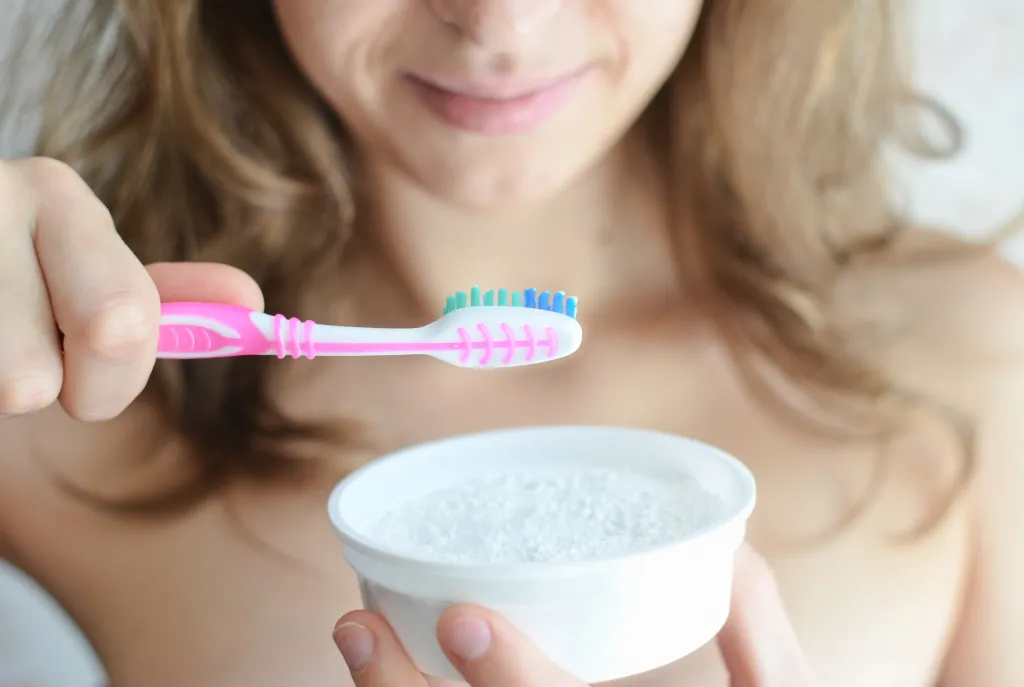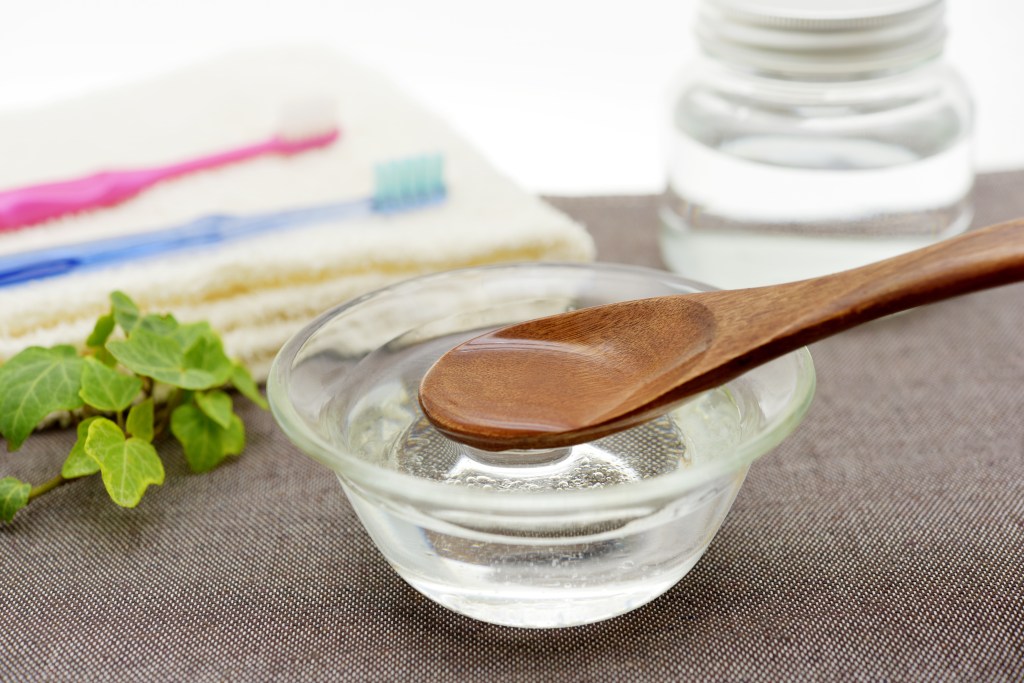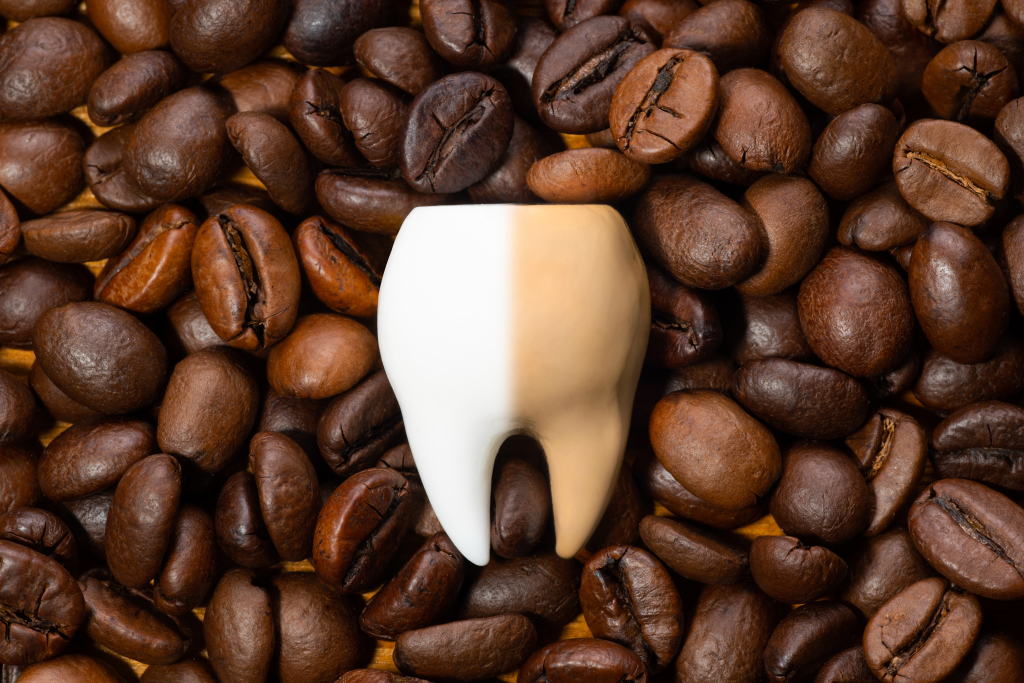At a glance
Teeth can gradually turn yellow and lose their natural brightness as enamel wears down and surface stains from coffee, tea, red wine, and smoking build up. At-home whitening methods offer a convenient and gentle way to reduce discoloration and help restore a bright smile.
A brighter smile can boost your self-confidence, but professional whitening treatments aren’t always accessible or affordable.
Teeth whitening at home offers a convenient alternative using natural ingredients you can easily incorporate into your daily routine.
Explore simple but effective methods to help remove stains without harsh chemicals and achieve naturally white teeth.
Why do teeth turn yellow?
Teeth can turn yellow for several reasons, often beginning with the gradual erosion of tooth enamel, the hard outer layer that protects the teeth.
As enamel wears down, it exposes dentin, which has a naturally yellowish tone, giving teeth a duller appearance.
At the same time, surface stains from everyday habits, such as drinking red wine, coffee, or tea, can build up, especially if brushing is inconsistent.
Additionally, plaque buildup from poor oral health routines can lead to discoloration, as well as contribute to more serious concerns, including cavities and inflammation of the gums.
Smoking, medications, such as certain antihistamines and antibiotic drugs, as well as the natural aging process, also play a role in yellowing teeth.
For many people, a dry mouth, which reduces saliva that normally helps wash away food and bacteria, can further accelerate staining and enamel wear.
Watch the video below to learn how to whiten your teeth with at-home remedies.
How teeth whitening works
Teeth whitening works by breaking down stains and discoloration that accumulate on and beneath the tooth’s surface.
Most teeth whitening products use active ingredients, such as hydrogen peroxide or carbamide peroxide, which release oxygen molecules that lift buildups from enamel.
These agents are designed to remove surface stains caused by food, drink, and other daily habits, gradually revealing whiter teeth.
“Natural ingredients, such as malic acid found in blueberries and strawberries, can also contribute to brighter teeth by gently dissolving stain particles without harsh chemicals,” explains Dr. Berg.
Many at-home teeth whitening methods, ranging from whitening strips to light-emitting diode (LED) kits, aim to mimic professional treatments in a more accessible way, though they generally aren’t as potent.
While these approaches are effective for many, frequent use or high concentrations can, in some cases, cause tooth sensitivity, especially without proper care.
For those seeking more significant results, cosmetic dentists offer advanced whitening options, though consistent brushing and good oral hygiene remain essential for maintaining brightness.

Five ways to whiten your teeth at home
Achieving a whiter smile doesn’t always require in-office treatments or costly procedures.
While cosmetic dentistry offers effective options for brightening teeth, there are also more natural ways to promote a brighter appearance from the comfort of your home.
Here are five simple and effective remedies to help whiten your teeth at home.
1. Baking soda
Baking soda is a mild abrasive that, when used carefully, helps scrub away buildups without damaging tooth enamel. This natural remedy also balances acidity in the mouth, which can support the maintenance of whiter teeth.
Brushing with baking soda may be more effective than using non-baking soda options, even those that contain harsher abrasives.
For best results, use a paste made of baking soda and water a few times a week.
2. Hydrogen peroxide
Hydrogen peroxide is a common ingredient in many whitening products and can be diluted with water to be used as a mouth rinse.
Rinsing with diluted hydrogen peroxide can promote whiter teeth by releasing oxygen molecules that gently remove discoloration.
When used properly, peroxide-based tooth whitening contributes to a brighter smile and has been a trusted option in cosmetic dentistry for over a century.
It may also help maintain a clean, polished appearance, but can trigger mild and typically temporary sensitivity or gum irritation in some individuals.

3. Coconut oil
Coconut oil pulling is a traditional practice that involves swishing oil around the mouth to help lift debris and surface discoloration.
A review published in Healthcare found that oil pulling with coconut oil may support oral health by significantly reducing the number of bacteria in saliva, which has been linked to its antimicrobial benefits.1
4. Fruits and vegetables
Crunchy fruits and vegetables, including celery and carrots, can play a role in naturally cleaning teeth while you chew.
Their fibrous texture gently scrubs the tooth surface, helping dissolve particles that may lead to dullness and staining.
Additionally, chewing fibrous foods promotes saliva production, which assists in rinsing away food debris and supporting a clean, balanced oral environment.
5. Baking soda hydrogen peroxide paste
When mixed together, baking soda and hydrogen peroxide form a foaming paste that can aid in removing stains and brightening the surface of your teeth.
This combination may offer enhanced whitening effects compared to using either ingredient alone, especially for surface discoloration.
However, to avoid enamel damage, it’s important to use this method sparingly, no more than a few times per week, and rinse thoroughly after brushing.

How to prevent stains on your teeth
Preventing stains on your teeth begins with everyday habits that promote oral cleanliness and reduce exposure to stain-causing substances.
Limiting dark beverages, such as black coffee, tea, and red wine, or using a straw when drinking them, can contribute to a cleaner appearance over time.
Brushing twice daily with a toothpaste that contains a mild abrasive assists in removing residue before it sets into the enamel.
Additionally, regular flossing and rinsing after meals promotes a cleaner mouth environment and reduces buildup that leads to discoloration.
For those using whitening kits, it’s essential to follow directions carefully to avoid overuse, which can reduce whitening effects over time or lead to enamel damage.
Regularly scheduling professional dental cleanings helps remove hardened plaque and discoloration that daily brushing may not reach.
Chewing sugar-free gum after eating also assists in preventing staining by stimulating saliva, which naturally washes away food particles and neutralizes acids.
Finally, avoiding frequent snacking between meals may minimize continuous exposure to stain-causing substances and support long-term oral cleanliness.

Key takeaways
- Baking soda gently removes surface stains and supports oral balance.
- Diluted hydrogen peroxide helps lift discoloration from enamel.
- Coconut oil pulling and crunchy vegetables can help reduce bacteria and naturally clean teeth.
- Combining baking soda with hydrogen peroxide can enhance whitening, but should be used with caution.
FAQ
1. What causes teeth to look yellow?
Teeth can appear yellow due to the gradual erosion of tooth enamel, which exposes the naturally darker dentin beneath.
Additional factors include surface stains from beverages such as red wine, coffee, and tea, as well as smoking, certain medications, aging, and a dry mouth, which reduces the saliva needed to help cleanse the teeth.
2. What is the best way to whiten teeth at home?
Effective methods for teeth whitening at home include brushing with baking soda, rinsing the mouth with diluted hydrogen peroxide, and practicing oil pulling with coconut oil.
These natural techniques can assist in a brighter appearance when combined with consistent oral care and limited exposure to staining substances.
3. Does swishing hydrogen peroxide whiten teeth?
Yes, diluted hydrogen peroxide helps promote a whiter smile by releasing oxygen molecules that gently eliminate stains from the enamel. When used properly, it contributes to brighter teeth and may also maintain a clean, polished appearance.
4. How long does it take for baking soda to whiten your teeth?
Using baking soda a few times per week may lead to noticeable whitening over time, especially for surface buildups. Results are gradual, but regular use can lead to a visibly cleaner, brighter smile within several weeks.








